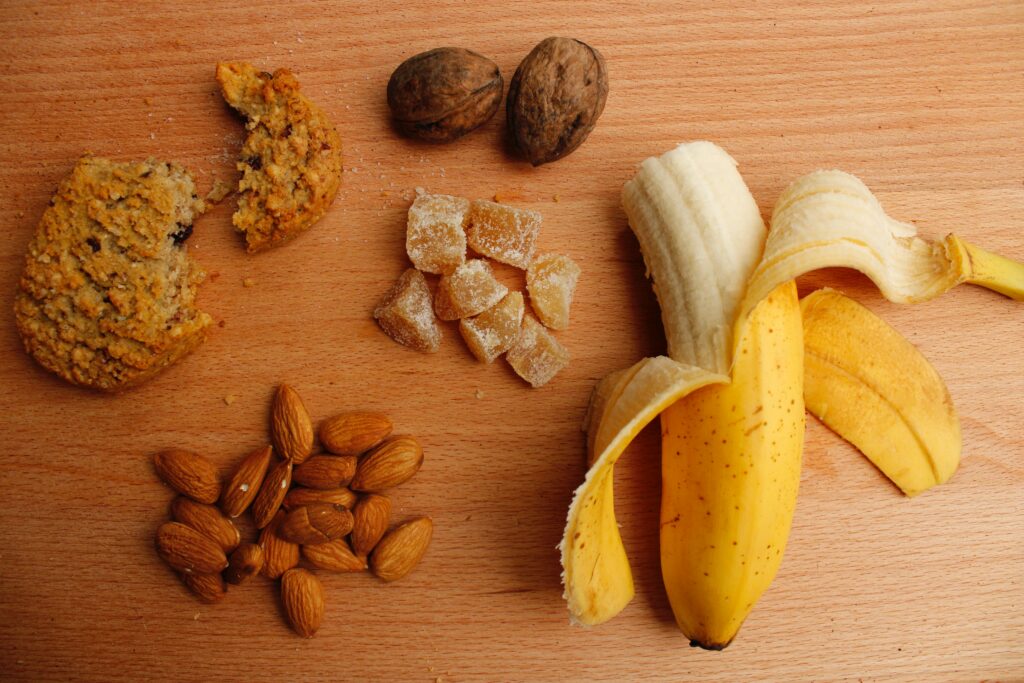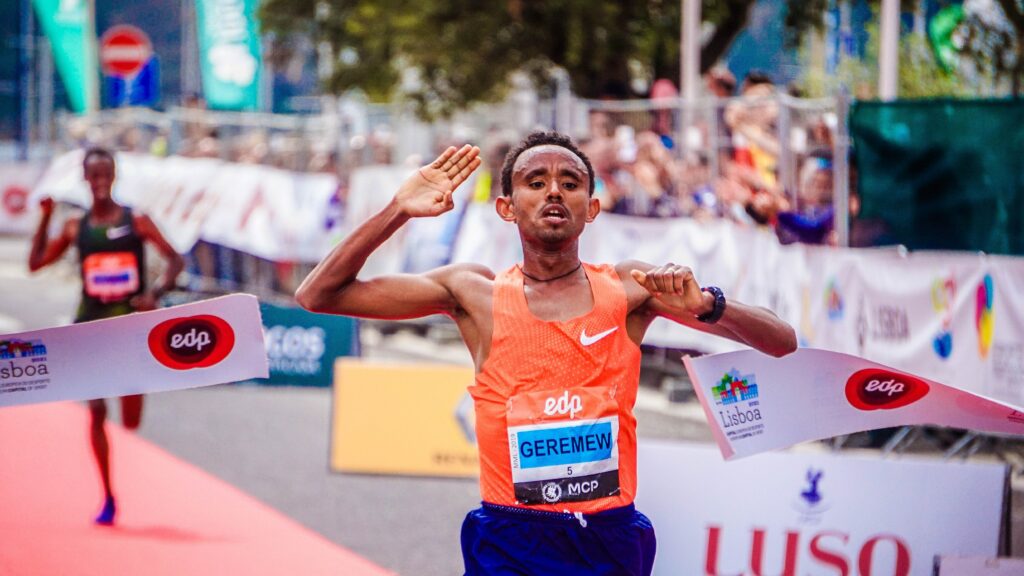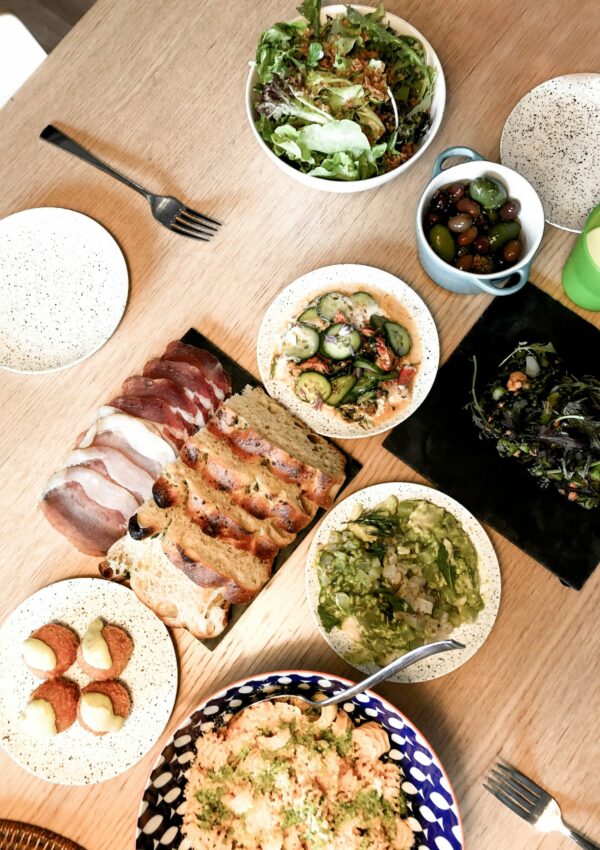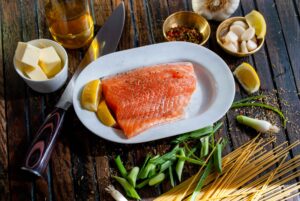An excellent and proven long distance running diet is about Energy and combustion. When we run, it requires a lot of energy. And as soon as you put on your running shoes, the muscle cells come to work. The power stations inside each muscle cell are called mitochondria and the performance of the mitochondria is crucial when it comes to your performance during your run.
With the help of enzymes, they can convert the nutrients of the diet into energy. Long Distance Running Diet is also about timing for food intake. This high-octane energy product is called ATP and is an abbreviation for Adenosine triphosphate.
the muscles can only work if they are supplied with ATP, but the problem is that there is no more available ATP stored in the muscle cells than for the first few running steps. The muscles must therefore immediately start producing energy themselves.
The raw materials for this energy production are sourced primarily from carbohydrates and fat.
What Is A Runners Diet

Carbohydrates are number one in the runner’s fuel tank. The carbohydrates are stored in the form of glycogen in the muscle cells and the liver. About 20 – 40% is in the liver while the rest is ready for use in the muscles. The regulation of the supply is done using several hormones, of which insulin is the most important.
Good carbohydrate sources are fruits, vegetables, and cereals such as bread, pasta, rice potatoes, and breakfast products. When glycogen stores are so important to runners, it’s because stored glycogen is the only nutrient that can be converted to ATP – the pure cell energy.
As the body only has limited carbohydrate stores, it is important to ensure a constant filling. The glycogen depots are also important as fluid depots. For every gram of glycogen stored in the liver and muscles, 3 grams of water are released, by the combustion of glycogen.
This is thus an important fluid depot is located, which is needed during training and competition. Just about half of the energy in your diet about 55% should preferably come from carbohydrates
Simple and complex carbohydrates in Running
Carbohydrates are divided into simple and complex carbohydrates. The simple carbohydrates are simple in their molecular structure and are therefore rapidly converted in the organism.
Even so fast that the body is not fully equipped for it, as the pancreas, in response to this, secretes large amounts of insulin. Which draws large amounts of sugar out of the blood and installs it in the cells.
This means that the blood sugar drops below the normal level, and thus the desire for even more sweet food increases. The fast carbohydrates are in honey, sugar, jams and sweets. They are often also called empty calories because they provide energy but not vitamins, minerals, or fiber.
Fast energy sources are also dried fruits and they also contain useful vitamins, minerals and fiber. The composite carbohydrates are more complicated in their molecular structure and therefore convert more slowly in the organism. These are also called slow carbs and are found in potatoes, vegetables, rice, pasta and fruits.
The largest part of the daily intake of carbohydrates should be slow carbs. Fruits and vegetables also have the advantage that they contain many vitamins, minerals and dietary fiber.
Insulin
Insulin is sometimes called the cornucopia hormone because it keeps the blood sugar level down and in balance. It is formed in the pancreas and is sent out into the bloodstream when the content of blood sugar – glucose – rises.
Insulin has the “key” to the cells and opens them so that glucose can enter and contribute to the energy process. Thereby, the concentration of glucose in the blood decreases.
Without insulin, no sugar can enter the cells, and therefore fat must be used for metabolism. However, since fat burning causes acid formation, this can lead to acid poisoning.
People with insulin-demanding diabetes can get their diabetes completely or partially under control by engaging in physical activity because exercise provides more “keyholes” in the cells so, the sugar still can become a part of the normal energy production.
Glycogen
Carbohydrate (glycogen) is the main energy supplier for the working muscles. In a normal person, the glycogen stores are about 200 – 300 grams, while top-trained athletes can have up to 800 – 1000 grams of fuel to 1-2 hours of running
Carbohydrates in the energy supply
Various types of sugar compounds, such as glucose, fructose and galactose, are sent to the liver from where the sugar status of the muscles is immediately registered. If there is a lack of readily available fuel, the muscle depots fill up while the rest is stored in the liver. Something is also converted to fat – triglyceride – and stored in the fat depots.
Runners Diet – Fat

You can hardly avoid getting enough fat. A maximum of 30% of dietary energy should come from fat. The best would be if most of this fat comes from vegetable foods such as nuts, seeds, vegetable oil as well as fatty fish. If you eat too much fat, you can reduce your fat intake by choosing lean products from meat and dairy products.
Your fat consumption also drops automatically when you eat more vegetables, fruits, and whole grain products. If you want to achieve weight loss, it can only happen if the body consumes more energy than you intake. The metabolic processes require 70 – 80% of the energy, and the physical activity requires the rest.
Fat percentage
An average adult man today has a fat percentage of about 25 – 35, women have a higher fat percentage. The fat depots typically sit around the intestines, the internal organs of the body, and under the skin.
Men’s depots tend to gather around the belt site, while women’s fat is distributed around the hips, buttocks and thighs.
When we look at it as energy considered, fat is the pure “tile stove”. One kilo of pure fat contains 8-9000 calories or the equivalent of a 10 – 12 hour run. During the digestive process, the fat molecules are broken down into smaller and more easily metabolizable units.
these units are so-called fatty acids, which, depending on the current need, end up in the fat depots or are sent directly to the muscles and stores as triglycerides that can be broken down and directly involved in the energy production.
With relatively moderate muscle work and a good supply of oxygen, the muscles choose to use broken-down fat as an energy source. The fat – triglycerides – is first broken down into fatty acids and then converted to ATP, CO2 and water.
Runners Diet – Protein
Protein is found in all the body’s cells and is part of the structure of organs, brain, glands, hormones, enzymes, nerves – everything is made up of proteins and there are thousands of these, all of which have in common that they are composed of amino acids, but always in different conditions. Protein is the body’s building blocks.
The important proteins are those that contain one of the 20 amino acids that the body uses to build its own proteins. The body only needs 0.7 – 0.8 grams of protein per kilogram of body weight per day, which means that you need 56 grams of protein if you weigh 70 kilos. We can also say that protein should make up 10 – 15% of the energy in the daily diet.
Protein is found both in animal foods such as meat, fish, eggs and cheese and in vegetable foods such as legumes, nuts, groats, potatoes and bread. If you eat varied, the need for protein is automatically covered.
Protein is best utilized when animal and vegetable protein are eaten in the same meal, preferably in a ratio of 1: 3. Vegetable proteins also have the advantage that they contain fewer calories and more vitamins, minerals and fiber. Protein food makes you tired because protein is the only nutrient that is digested already in the stomach.
Protein and energy supply
And for this process, a large energy supply is required – ie. large amounts of blood which, among other things, are drawn from the brain, and this causes fatigue. On the other hand, the protein stays longer in the stomach and gives a feeling of satiety.
Some protein compounds in meat and milk also contain the amino acid tryptophan, which has a calming and sleep-inducing effect. The large protein molecules are broken down in the digestive process into amino acids and then transported to the liver, where they are included as a raw material in glycogen production.
The primary function of the protein is to maintain and build up the body’s cells, which are constantly being broken down, especially in athletes who train hard.
Protein also goes in as the last energy reserve at extreme physical loads, such as in connection with hunger or prolonged running, where the other energy reserves are depleted. In these situations, the protein can go in and cover about 10% of the energy supply. The protein in this case is taken directly from the muscle tissue, ie. the body begins to “eat itself”.
Energy release By Running
The aerobic energy releases

The body gets energy in two different ways. Either by combustion or by cleavage. It can be done either aerobically with oxygen or anaerobically – without oxygen, and the raw materials come as mentioned from the body’s carbohydrate and fat depots.
When the muscle is working moderately and getting enough oxygen, most of the energy comes from burning carbohydrates and fat like a marathon runner.
This combustion provides energy and only CO2 and water as waste materials. We get rid of CO2 via exhaling air, while the water remains in the body. However, something disappears by the evaporation of sweat on the skin.
This type of energy consumption is by far the most “economical”.
The anaerobic energy releases

During harder muscle work – like a sprinter where not enough oxygen can be obtained for the combustion, the muscles must make sure that ATP still can be formed. As the first, the small storage is used which is ready in the cells but can only supply energy for 10 – 20 seconds of work.
It is only just enough to take the first steps. The next tank, which is the muscle’s glycogen stores, is now being opened up. Here lies “free” energy to about 1-2 minutes of fast running, which may be sufficient if you just have to run a 400m on a stadium – or after the bus.
But when you sit down, the lungs work at a very high pace and the muscles feel pretty stiff. This is because you are accumulating oxygen debt and lactic acid (Lactate).
Lactate and running
Lactate is a waste product in energy production. It has a paralyzing effect on the muscle and evokes a familiar, burning sensation. The normal concentration of lactate is 1 mmol / l, but it can reach 3-4 mmol / l after a long run.
Towards the end of a hard run, the concentration may increase to 20 mmol/l. This type of muscle work is called anaerobic work, which means that the energy is delivered without sufficient oxygen supply.
Let’s assume the run should continue. There would now be huge costs in procuring energy quickly – here and now. On the one hand, the energy you get available during cleavage is many times less than during combustion, and on the other hand, lactate is formed.
You will therefore need to slow down the pace and breathe and the energy is now supplied by a mixture of carbohydrate and fat burning. The better your fitness is, the greater the share of energy supply will be delivered from fat.
Now you know the basics of energy release and your body’s metabolism. So let’s look at the best fuel for your long-distance running.
Runners Nutrition

Health, variety and moderation are three fundamental rules in a healthy diet, which also is the key to success in long-distance running. These rules ensure that your diet is balanced and provides plenty of energy. In general, nutrition that intakes raw provides a good diet and contains few unhealthy ingredients. So, as a start try to:
- Avoid eating too much processed foods high in salt and fat
- Vary your diet so you are sure to get all the vitamins and minerals you need
- It is generally better to eat a little less but more often. Get used to eating snacks every 3-4 hours
- Sports drinks and gels can be an important element for competition/training but remember to include their high sugar content when planning your daily diet
Once you have decided to run regularly, your body’s need for energy and nutrients increases. So it will be a good idea to learn something about the most important dietary principles and notice what your body responds best to.
Energizing substances
Your need for energy substances as well as other nutrients does not just depend on the intensity of your training. Also consider whether you have a normal weight, whether you smoke, take medication, or whether you suffer from chronic diseases.
So, fuel for your training with the right knowledge can nourish yourself so you can run longer, faster, feel more comfortable and enjoy the training even more.
As mentioned, there are three types of energy substances: carbohydrates, fats and proteins. The first two are directly involved in the energy supply, while proteins are primarily used to build and maintain the body’s cells. You will also need extra supplements of certain vitamins, minerals and trace elements. The need for fluid also increases when you run. The fluid is not only used in heat regulation but is also an important prerequisite for the various nutrients to be metabolized and utilized.
Runners Diet Plan
Know your needs
average adults needs between 2,000 and 2,500 calories for women and men per day, respectively, just to function normally. If you train for a race, you need more. Depending on the frequency, intensity and duration of your training, your body needs different amounts each day.
Calculating your energy needs includes keeping an eye on your food intake and your training efforts. A sports nutritionist can help you to plan a diet that optimizes your training and recovery. You may also find an app that can help you with this.
Plan your meals
allow 1 to 4 hours between food intake and training, which should depend on the size and content of the meal and also remember that it takes longer to digest protein than carbohydrates. When it comes to carbohydrates, make sure that the meal before a run has a low GI (Glycemic Index), as this will help maintain a higher blood sugar level.
If you run in the morning, it is a good idea to eat a small carbohydrate-rich breakfast meal 20 – 30 min. before you run as your energy depots will be depleted during the night. ca. 20 min. before a run, an isotonic sport drink a small banana or 50 grams of raisins with a little water will be a good fuel, but remember that fluid is digested faster, which means that the energy is more readily available.
Running meal plan – dietary supplements and carbo loading
Also, try to eat within an hour after the run, as there during that period more nutrition is converted to glycogen. If you cannot eat a big meal, then eat a snack or two.
- Dietary supplements all have different nutritional needs and if vitamins, minerals, and other dietary supplements are used properly they can provide nutritional support to a runner’s diet and ensure that all nutritional needs are met. However, the best advice will still be to seek support from a sports dietitian and get a program tailored specifically for you. Then you are on the safe path too.
- “Carbo-loading” If you want to run for more than 90 minutes for a competition or just as part of your training program, then the so-called “carbo-loading” will be a good method to fill up your muscles with glycogen, which can then be released during the run. But it’s just not a good idea to eat a giant bowl of pasta the evening before like the good old marathon tradition and it can also increase the risk of stomach problems.
Instead, try to maintain a daily intake of 9 grams of carbohydrate per 1 kilogram of body weight in the days leading up to the race. Combine this with a gradual decrease in your training, as you will thereby use less of your energy stores, which will mean that your glycogen stores are filled up the evening before the big race.
The glycemic index
Foods that lie high in the glycemic index (GI) are absorbed quickly and will typically give you a “sugar shock” or cause your blood sugar to rise sharply, which is followed by a low-point when your blood sugar drops lower than before you ate. Foods with a low GI release their energy slowly.
Foods with a low GI are excellent for sports activities because they both increase blood sugar slowly, but are ready to use and provide an energy boost without fluctuations as foods with a high GI. Foods GI is measured on a scale from 0 – 100, where 100 is pure sugar. A GI of about 55 or less is considered low – 70 or more is considered as high.
Great food for runners is:
- almonds
- Berry
- Bananas
- Broccoli
- Spinach
- Green tea
- Wholemeal pasta
- Fat fish
- Peanut butter
Vitamins
If you compare the body to an engine, then the vitamins are the spark plugs that should make the fuel ignite. You can read more about vitamins here.
Minerals
Minerals and trace elements are inorganic substances that act as building materials in the body and help maintain important life processes. You can read more about minerals and traces here.
Final Thoughts
As you can see, there are many ways to optimize your running training when it comes to eating in the right way at the right time and with the right amount of nutrition.
I hope you like this blog and if you have any questions about the topic or want to leave your own Personal review, please leave a comment below.









I read most of your information on your web site and found it to be very helpful and well researched. You really covered the running very well and this applies to so many different types of sports Also just every day work outs I loved the eating right part this is a great help.
Hi Walt
Thank you for the comment. Happy that you find some of it useful.
Be Well
I can tell that you put a lot of research and effort into this article! It not only covers the nutritional basics for runners and athletes, but also goes into how those needs change based on the duration and timing of a run. I really appreciated your explanation of how to carb load in a more effective way. Thank you for sharing this information
Hi Delaney
Thank you for the comment. Happy that you could use some of it – and you get the good point.
Be Well